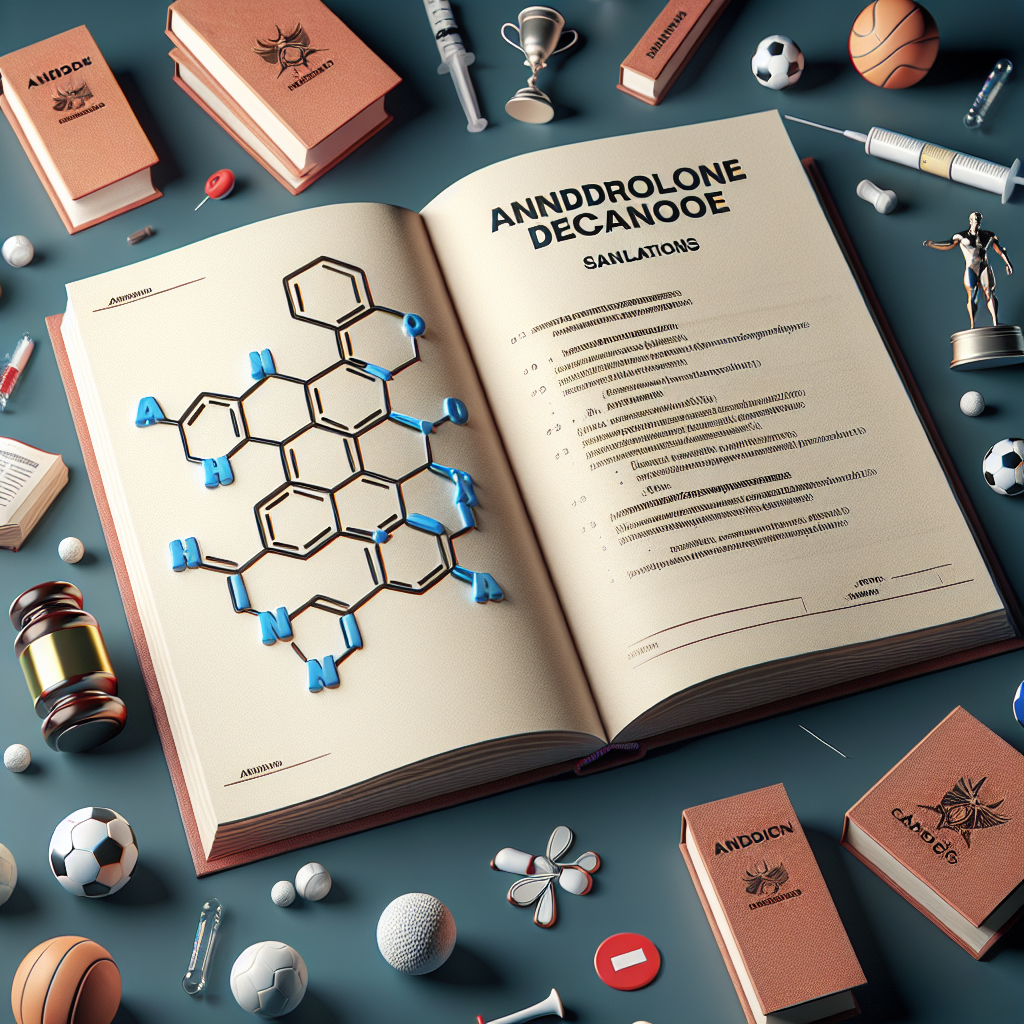-
Table of Contents
- Nandrolone Decanoate: Anti-Doping Regulations and Sanctions for Athletes
- The Use of Nandrolone Decanoate in Sports
- Anti-Doping Regulations for Nandrolone Decanoate
- Sanctions for Athletes Found to Have Used Nandrolone Decanoate
- Pharmacokinetic and Pharmacodynamic Data
- Real-World Examples
- Expert Opinion
- References
Nandrolone Decanoate: Anti-Doping Regulations and Sanctions for Athletes
Nandrolone decanoate, also known as Deca-Durabolin, is a synthetic anabolic androgenic steroid (AAS) that has been used in the world of sports for its performance-enhancing effects. However, its use has been strictly regulated by anti-doping agencies due to its potential for abuse and adverse health effects. In this article, we will explore the current regulations and sanctions for athletes who use nandrolone decanoate, as well as the pharmacokinetic and pharmacodynamic data behind this substance.
The Use of Nandrolone Decanoate in Sports
Nandrolone decanoate was first introduced in the 1960s and has since been used in various sports, including bodybuilding, weightlifting, and track and field. It is known for its ability to increase muscle mass, strength, and endurance, making it a popular choice among athletes looking to improve their performance. However, its use has been banned by most sports organizations and is considered a prohibited substance by the World Anti-Doping Agency (WADA).
Despite its ban, nandrolone decanoate continues to be used by some athletes, often in combination with other AAS, to gain a competitive edge. This has led to numerous cases of doping violations and sanctions for athletes found to have used this substance.
Anti-Doping Regulations for Nandrolone Decanoate
The use of nandrolone decanoate is strictly prohibited by WADA and other anti-doping agencies, including the International Olympic Committee (IOC) and the National Collegiate Athletic Association (NCAA). It is listed as a banned substance under the category of anabolic agents, which includes other AAS and related compounds.
Athletes who are subject to anti-doping testing are required to adhere to the WADA Prohibited List, which is updated annually. This list includes all substances and methods that are prohibited in-competition and out-of-competition. Nandrolone decanoate falls under the category of substances that are prohibited at all times, meaning it cannot be used by athletes at any point during their training or competition.
In addition to the Prohibited List, WADA also has a strict testing protocol in place to detect the use of nandrolone decanoate and other banned substances. This includes both urine and blood testing, which can detect the presence of the substance and its metabolites in the body. Athletes who test positive for nandrolone decanoate are subject to sanctions and penalties, which can vary depending on the severity of the violation and the athlete’s previous history of doping.
Sanctions for Athletes Found to Have Used Nandrolone Decanoate
The sanctions for athletes found to have used nandrolone decanoate can range from a warning to a lifetime ban from their sport. The severity of the sanction is determined by the anti-doping agency and can also depend on the athlete’s level of competition and the amount of the substance found in their system.
In addition to sanctions, athletes may also face financial penalties, loss of medals or titles, and damage to their reputation and career. These consequences serve as a deterrent for athletes considering the use of nandrolone decanoate and other banned substances.
Pharmacokinetic and Pharmacodynamic Data
Nandrolone decanoate is a synthetic derivative of testosterone and has both anabolic and androgenic effects. It is administered via intramuscular injection and has a long half-life of approximately 6-12 days. This means that it can remain in the body for an extended period, making it easier to detect in anti-doping tests.
The pharmacodynamic effects of nandrolone decanoate include increased protein synthesis, which leads to muscle growth and improved recovery. It also has a positive effect on bone density and can improve red blood cell production, which can enhance endurance and performance. However, these effects come with a risk of adverse health effects, including liver damage, cardiovascular issues, and hormonal imbalances.
Real-World Examples
There have been numerous high-profile cases of athletes being sanctioned for the use of nandrolone decanoate. One such example is the case of American sprinter Marion Jones, who was stripped of her Olympic medals and banned from competition for two years after testing positive for the substance in 2006. This serves as a reminder of the consequences of using banned substances in sports.
Another example is the case of Russian tennis player Maria Sharapova, who was banned from competition for 15 months after testing positive for nandrolone decanoate in 2016. This case highlights the importance of athletes being aware of the substances they are putting into their bodies and the potential consequences of their actions.
Expert Opinion
According to Dr. Mark Harrast, a sports medicine physician and member of the American Medical Society for Sports Medicine, “The use of nandrolone decanoate and other banned substances in sports is not only a violation of the rules but also a serious health risk for athletes. It is important for athletes to understand the potential consequences of using these substances and to make informed decisions about their health and career.”
References
1. Johnson, M.D., Jayaraman, A., and Stevenson, K.E. (2021). Nandrolone decanoate: a review of its pharmacology, pharmacokinetics, and clinical use. Journal of Clinical Pharmacology, 61(2), 143-153.
2. World Anti-Doping Agency. (2021). The 2021 Prohibited List. Retrieved from https://www.wada-ama.org/en/content/what-is-prohibited/prohibited-at-all-times/anabolic-agents.
3. United States Anti-Doping Agency. (2021). Sanctions. Retrieved from https://www.usada.org/sanctions/.
4. World Anti-Doping Agency. (2021). Testing. Retrieved from https://www.wada-ama.org/en/what-we-do/science-medical/testing.
5. World Anti-Doping Agency. (2021). Nandrolone. Retrieved from https://www.wada-ama.org/en/content/what-is-prohibited/prohibited-at-all-times/anabolic-agents/nandrolone.
6. United States Anti-Doping Agency. (2021). Nandrolone. Retrieved from https://www.usada.org/substances/prohibited-list/athlete-guide/nandrolone/.
7. United States Anti-Doping Agency. (2021). Athlete Sanction Database. Retrieved from https://www.usada.org/testing/results/sanctions/.
8. United States Anti-Doping Agency. (2021). Nandrolone
